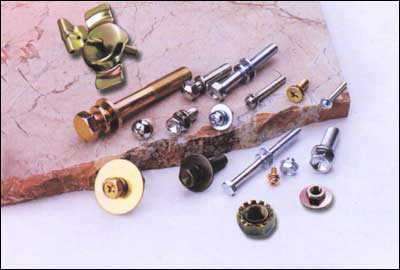Choosing the tightening method of the bolt connection should be based on the characteristics of the various tightening methods, and the tightening method should be reasonably selected according to the requirements of the design of the initial preload force dispersion degree and the pre-tightening force of the filial piety. The requirement for the degree of dispersion of the initial preload force is usually expressed by the tightening factor (Q), which is also commonly referred to as the initial preload force dispersion. Although the initial preload force dispersion is different due to the different tightening tools and the accuracy, the initial preload force dispersion is different when tightening due to the different tightening methods. Therefore, the tightening factor is different. It is an important condition for selecting the screwing method.

The three typical typical tightening methods of the torque method, the corner method and the torque slope method are given in Table 3. The following is a brief introduction of their characteristics as follows:
(1), torque method
The torque method is a method of tightening control in the elastic zone using a linear relationship between torque and preload. This method controls only a certain tightening torque when tightening, and therefore, because the method is easy to operate, it is a generally conventional tightening method. However, since about 90% of the tightening torque acts on the friction of the thread and the friction of the bearing surface, the true acting force is only about 10% in the axial preload, and the dispersion of the initial preload is the friction during the tightening process. The degree of control of the factors varies, so the degree of dispersion of the tightening method is large, suitable for the fastening of general parts, and is not suitable for the connection of important and critical parts.
(2), corner method
The corner method is a method of controlling the initial pre-tightening force by rotating a bolt at an angle relative to the nut when tightening, which is called a fastening angle, and using a certain fastening angle as an index. This tightening method can be used in the elastic zone and the plastic zone. When the slope of the QF curve changes abruptly, the dispersion of the preload force increases as the tightening angle is set. Therefore, in the case where the rigidity of the connected member and the bolt is high, the fastening of the elastic region is disadvantageous; when the plastic region is fastened, the dispersion of the initial preload force mainly depends on the yield point of the bolt, and the corner angle The error has little effect on it, so the fastening method has the advantage of maximizing the strength of the bolt (ie, a higher preload).
It should be noted that the tightening method causes plastic deformation of the bolt portion and the threaded rod portion when the plastic region is tightened. Therefore, the applicability should be considered in the case of poor plasticity of the bolt and repeated use of the bolt. In addition, if the pre-tightening force is too large and the connected parts are damaged, the yield point and the upper limit of the tensile strength of the bolt must be specified.
Loader Parts,Track Loader Parts,Case Loader Parts,Skid Loader Parts
JINING SHANTE SONGZHENG CONSTRUCTION MACHINERY CO.LTD , https://www.stszcmparts.com